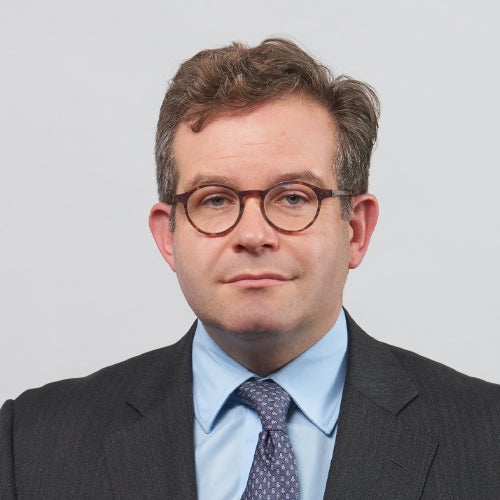
"We see attractive opportunities for fixed income investing, along with the income and capital growth offered by the European equity market. This is an exciting environment for the management of mixed asset strategies."
Thomas Moore, Fund manager

This Pan-European mixed asset fund flexibly allocates at least 50% to European investment grade and high yield bonds and the remainder in European equities.
Why this fund?The Invesco Pan European High Income Fund is a diversified income-oriented product, which uses a flexible approach to find what we believe are the best investment opportunities in Europe. The fund actively manages its exposures to European investment grade and high yield bonds and to European equities according to market conditions.
Invesco’s Fixed Income team has a 30-year track record of investing in corporate and higher yielding bonds. The fund invests in European investment grade corporate bonds, European high yield bonds, subordinated debt issued by financials and in European equities.
The equity team also enjoys a long track record with equity fund manager Oliver Collin having over 20 years of investment experience. Oliver is supported by the Henley-based Invesco European Equities team to pick the best dividend-oriented opportunities.
The fund is free from having to track a benchmark index and the fund managers tilt the asset allocation according to market conditions and where they believe the best value is to be found.
Bonds with strong balance sheets and predictable cashflows form the income core of our portfolio. The equity allocation aims to deliver additional income, diversification and enhanced returns. It can be adjusted depending on current market conditions.
The equity allocation is predominantly focused on Europe-based companies with the ability to pay strong and sustainable dividends. The exposure to equities can be adjusted depending on current market conditions.
Access the Invesco Pan European High Income Fund product page to view KIIDs/KIDs and factsheets. The investment concerns the acquisition of units in an actively managed fund and not in a given underlying asset.
Thomas Moore and Alexandra Ivanova, who manage the portfolio’s asset allocation and fixed income investments, each have over 20 years’ experience in bond markets. Oliver Collin manages the equity allocation, and also has over 20 years’ investment experience. Their approach is flexible and market-driven. They focus on absolute risk and return without the constraint of an index.
One benefit of the bond portion of a mixed asset portfolio is that it has the potential to deliver a steady income stream while offsetting stock market volatility. Meanwhile, a benefit of the equity component is that it has the potential to deliver higher returns in the long term.
After over a decade of low growth and relative market underperformance, the opportunity in Europe is much more encouraging. This is in part because investors are starting to question whether the era of US exceptionalism may be coming to an end, meaning Europe looks much more attractive on a relative basis. But more interestingly than that, there are changes afoot in Europe itself which are driving a much-improved outlook: Lower interest rates and lower inflation; a stronger consumer with increased real wages and the savings available to spend; plus, of course, meaningful fiscal stimulus.
Value investing is an investment strategy that involves picking securities that appear to be trading for less than their intrinsic or book value. To identify underestimated investments, value investors use their own financial analysis, rather than ‘following the herd’, and are long-term investors of quality companies.

Discover our Global Fixed Income Strategy Monthly Report, we offer an outlook for interest rates and currencies and look at which fixed income assets are favoured across a range of market environments.

As economies show resilience, selectivity and care remain critical for bond investors figuring out where to take duration risk and how to think about returns.

Discover alternative cash management solutions that may be able to offer enhanced returns versus overnight deposit rates.


Let us know using this form and one of our specialist team will quickly get back to you.